What to see and monuments in Ostuni
Ostuni
- Origins of Ostuni
- What to see in Ostuni
- Events in Ostuni
- Practicalities
- Seaside of Ostuni
- Masserie of Ostuni
- Trulli
- Museum of Ostuni
- Parks and protected areas
- Cuisine
- Images of Ostuni
- Ostuni local info
- Getting to Ostuni
Rentals
Services
- Property and land management
- Guest management
- Property restoration and reparing works
- Taxi service and taxi sharing service
- Services for disabled
Excursions
Food & Wine
What to see in Ostuni
The Cathedral
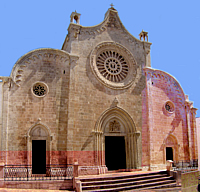
The Cathedral is the best known landmark of Ostuni. Built between 1435 and 1495 in the late Gothic style, it has a tripartite façade, divided by two pilaster-strips. Above the central portal there is a magnificent rose window with 24 finely carved ribs. The interior of the church is XVIII century and has a level ceiling and Baroque side chapels.
Palazzo Vescovile and La Loggia
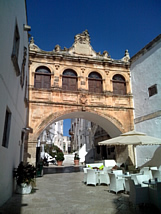
Inside the piazza on either sides of the cathedral one can see the Palazzo Vescovile and Palazzo del Seminario joined by an elegant arched loggia (1750) where there is a winged putto (originally two) on the fastigium. In the palazzo Vescovile lie the remains of the castle built in 1148 and destroyed in 1559.
The Surrounding Wall of Ostuni
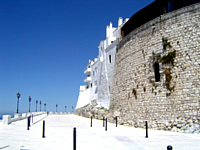
The historic events that brought about the construction of the defensive walls date back to the Messapians, the Byzantine, the Normans, the Angevins and the Aragonese The Aragonese, probably after the earthquake of the 1456, reinforced the walls and the towers of the previous period and enlarged the defensive boundary towards the south.
Palazzo Municipale
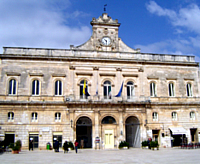
It was originally an ancient Franciscan convent built in 1304. In the year 1739 two wings of the cloister and part of the convent were redesigned. Later in 1864 the convent was enlarged and transformed to become the Town Hall by redoing the façade in neoclassic style.
The Column of Sant'Oronzo
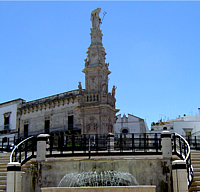
It is a column built in 1771 based on an idea by the local maestro Giuseppe Greco. It has a pyramidal shape, more than 20 metres high, with a statue of Saint Oronzo at the top. On the sides are various decorations and putti. At the four sides of the balustrade are statues representing San Biagio, Sant'Agostino, Santa Irene and San Giorgio Armeno. It is a perfect expression of the Baroque style.
Church of Santo Spirito
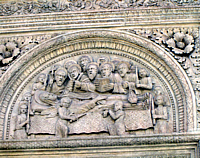
Built in 1637 by the bishop Melingi. It has one nave with a stone vault and a lunette. The façade is plain with a portal that strikes for its dimensions and the ornamental elements; it is older then the church (1450) and originally situated on the frontispiece of the medieval church of Ognissanti located in piazza del Moro (the modern piazza Sansone).
Outside Ostuni
The Sanctuary of Sant'Oronzo
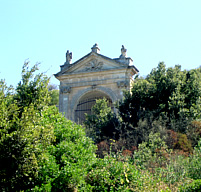
It was built between 1656 and 1657 with the money of the Ostuni population who wanted to thank the saint who, according to tradition, spared the Salento population from the plague that had started in Naples. The sanctuary is located on a hill called Morrone after an ancient specchia. It occupies the place of a former XVI church, built above a natural cave.
The Sanctuary of San Biagio
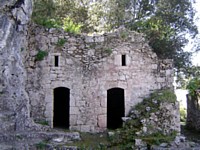
The sanctuary of San Biagio represents one of the most interesting example of monastic edifications along all the south side of the Murge. It is also a major evidence of the influence of the Byzantine culture in Puglia from the IX to the XI century. The origins of the church and of the nearby buildings date back to the XII century.
Ostuni
- Origins of Ostuni
- What to see in Ostuni
- Events in Ostuni
- Practicalities
- Seaside of Ostuni
- Masserie of Ostuni
- Trulli
- Museum of Ostuni
- Parks and protected areas
- Cuisine
- Images of Ostuni
- Ostuni local info
- Getting to Ostuni
Rentals
Services
- Property and land management
- Guest management
- Property restoration and reparing works
- Taxi service and taxi sharing service
- Services for disabled
Excursions
Food & Wine







